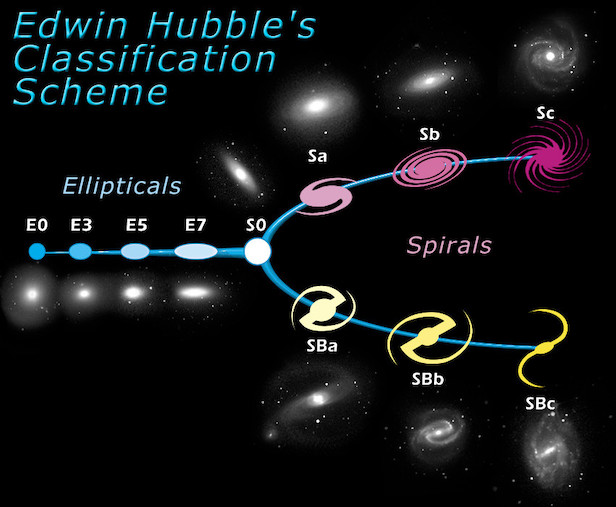Is there a common type of galaxy in the universe?
What could it be? Spiral? Elliptical? Lenticular? Or is there an outsider galaxy that is more common?

As one of the first steps towards a coherent theory of galaxy evolution, the American astronomer Edwin Hubble, developed a classification scheme of galaxies in 1926. Although this scheme, also known as the Hubble tuning fork diagram, is now considered somewhat too simple, the basic ideas still hold. Image credit: NASA/ESA
Asked by Janet Bannister
When people picture the swirling collections of stars and dust that we call galaxies, they usually picture a majestic spiral, much like the iconic Whirlpool Galaxy, which rests millions of light years away in the constellation of Canes Venatici. But galaxies come in all shapes and sizes, and spiral galaxies are by no means the most common. Galaxies also appear as giant ellipticals or oddly shaped irregulars but the most prevalent type of galaxy in the universe is the humble dwarf galaxy. A dwarf galaxy may look like an elliptical or irregular galaxy, but instead of containing 100 billion stars or more, it may only contain 1 billion stars or less. These dwarf galaxies are often found circling other larger galaxies; much like the Moon orbits our Earth.
Elliptical galaxies
Often with the appearance of a squashed ball, elliptical galaxies are the most common shape of galaxy in the universe.
Lenticular galaxies
These intermediate galaxies exist between the spiral and elliptical types. They have a bulge but no spiral structure to speak of.
Spiral galaxies
The spiral galaxy consists of a flat rotating disc of stars, gas and dust, as well as a central concentration of stars known as the bulge. Spiral galaxies can be found to have a bar, which appears to lace through the centre and link the arms.
Keep up to date with the latest news in All About Space – available every month for just £4.99. Alternatively you can subscribe here for a fraction of the price!




